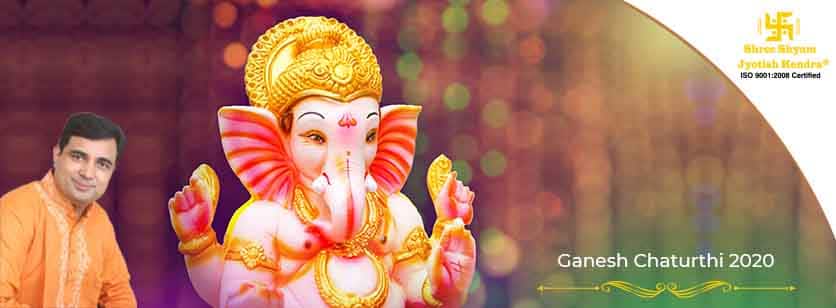
One of the most prominent festivals in central and Northern India, Ganesh Chaturthi, is again just around the corner. In times of crisis like this, the arrival of Lord Ganesha, the Vighna Harta (destroyer of obstacles) and the God of New Beginnings will definitely be an event to look forward to. Falling on 22nd August 2020, Ganesh Chaturthi is a celebration of the birth of Lord Ganesha that goes on for 10 days.
The main ritual of the festival is bringing the idol of the lord home, making the lord a part of your daily life, only to be sent back to his home on Mount Kailasha by immersing him in the water. But how did this festival come to be? And what is the importance of this festival? This blog discusses everything you need to know about the legend of Ganesha Chaturthi.
The Story Behind Ganesh Chaturthi
There are a number of stories that revolve around the legend of Ganesha’s birth, but the one that is retold the most goes like this:Once when Goddess Parvati was going to take a bath, she took off the sandalwood paste from her body and gave it the form of a person. She then proceeded to breathe life into it and named it Ganesha, her son. She told the young Ganesha to not let anyone enter while she was there. Standing his post on the door, when Ganesha saw Lord Shiva trying to enter the place, he stopped him. Young Ganesha was unaware of the fact that Lord Shiva was Goddess Parvati’s husband which made lord Shiva his father.
However, without trying to know the cause behind his behaviour, Lord Shiva, in his legendary anger, beheaded young Ganesha. When Goddess Parvati came to know of this, she got enraged at Lord Shiva. Upon realising what had happened, Lord Shiva ensured Parvati that Ganesha would live and sent out his followers to bring the head of a young baby whose mother was sleeping with her back to the child.
After a long search that went far and wide, the followers finally returned with the head of an elephant, which Lord Shiva attached to Ganesha’s body, and brought him to life just like he had promised. Moreover, Lord Shiva even blessed Ganesha with the boon that whenever there is an event on the face of this earth, the devotees will offer their first prayers to Ganesha and he will always be the first one to be remembered as he will bring them good luck in their endeavours. Lord Shiva also bestowed onto Ganesha the powers of removing people’s problems and obstacles, thus giving him the name Vighnaharta.
The History of the Festival
While there is no record of Ganesha Chaturthi being celebrated in the Vedic texts, there are many post-Vedic texts that depict the celebration of the festival. However, the most noted description of the festival comes from the late 19th century when Lokmanya Tilak promoted it as a means to oppose the British Rule Ban on Hindu gatherings.How Is Ganesha Chaturthi Celebrated
Ganesha Chaturthi is celebrated as a 10-day festival where devotees bring the idol of Lord Ganesha to their homes on the day of Ganesh Chaturthi and invoke the idol to life through a pooja called Pranpratishtha. The lord then stays in the house for 10 days, becoming a part of their daily lives, taking their pains away and blessing them in all manners possible.At the end of this 10 day period, the devotees then take the idol with pomp and dancing to the nearest water body where the lord is immersed. This is where Lord Ganesha returns back to his parents on Mount Kailasha, thus completing his time amidst his devotees.
During the time in which Lord Ganesha stays with his devotees, the offerings of Modak (sweet ladoos) is made as they are considered to be his favourites. It is a great time to seek Lord Ganesha’s blessings and invite him to come again next year. The leading astrologer in Delhi, Pandit Pawan Kaushik is now available to give advice and recommendations on Ganesh Chaturthi over a call. Book your appointment to learn from the expert about this grand celebration today.
 +91 9990176000
+91 9990176000 +91 9999097600
+91 9999097600
 CALENDAR 2024
CALENDAR 2024










